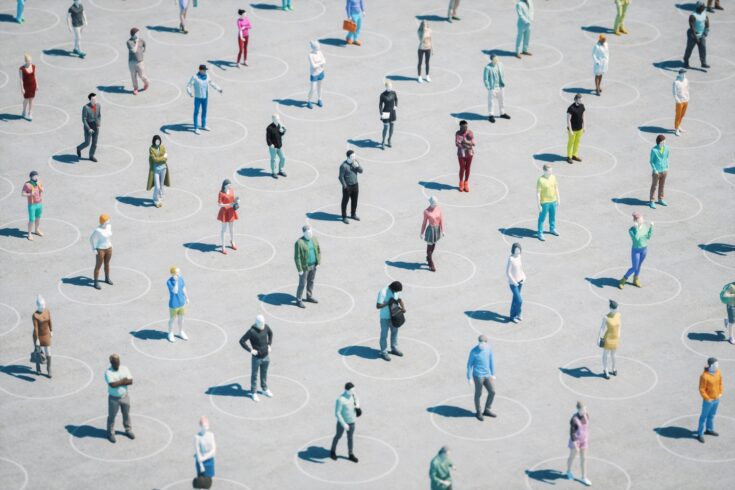Lancaster University’s School of Architecture is testing a unique, automated social distancing and wayfinding system.
The system is being tested at its Health Innovation Campus and was funded via Beyond Imagination, a new initiative underpinned by a £7.6 million award from Research England’s ‘E3’ fund.
It uses algorithms, design exploration processes, generative software, sympathetic signage, electronically created floor plans, and heat tracking and mapping to build bespoke systems and help ensure buildings are COVID-19 safe.
Adapting to social distancing
Dr Sherry Kothari, Director of the new campus, said:
As we look at ways of allowing people to live more normal lives, coming up with new adaptive systems which encourage this while maintaining health and safety will be essential.
Des Fagan, Project Leader and Head of Architecture at Lancaster University, said:
Currently no quantitative or qualitative research has been completed on how automated processes may impact the design of existing or proposed public spaces in the context of social distancing measures.
We decided to come up with a unique and adaptable automated solution, which will enable the input of floor plans to quickly generate signage that reacts to changes in government advice regarding social distancing.
We will evaluate customer responses, which will help us understand how people respond to certain types of signage over time. This is significant because social distancing, in one form or another, will be with us for some time.
Generative design exploration methods were used to automate and implement optimised wayfinding designs to improve the risk of areas identified as non-compliant. An exclusion zone between two passing users was automatically tracked onto the floor plans by software to highlight areas ‘at risk’ of non-compliance for social distancing.
The distancing measures can respond to changes in government advice in how far people should stay from each other and can be adapted for different social distancing rules.
Data will measure success
The study will provide data gathering for analysis and review of the success of social distancing measures. A user survey and heat mapping tracking will provide qualitative data on experience and operational success.
This ‘hands-on’ research aims to provide a unique methodology. It will use special visual programming packages and computer-aided design to automate a risk analysis of existing floor plans to identify areas of social distance non-compliance.
Imaginative signage
An array of imaginative signage is central to the new model, and the design team considered how to avoid signage ‘fatigue’. It includes geometrical shapes and a palette of blue, green and yellow mid tones to create a fresh, confident tone. The different shapes convey the seriousness of the message:
- circles for general greetings
- hexagons for more serious questions
- triangles for directional signage.
The system has already been tested by Lancaster City Council, which was keen to explore using the novel social distancing mode for retailers in the area.
Last updated: 11 April 2022

